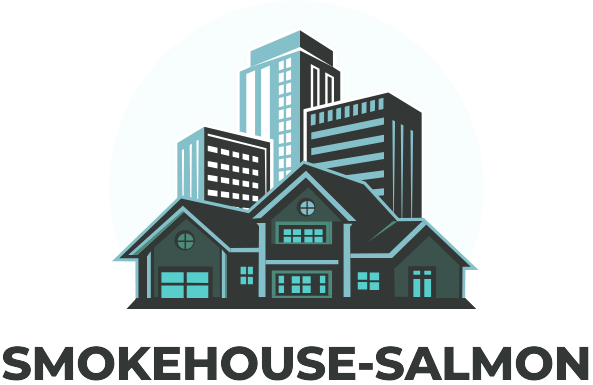Deciding between renting and owning a home is a significant choice many face. Each option comes with its own set of advantages that cater to different lifestyles and financial situations. For some, renting offers flexibility and lower upfront costs, making it an attractive choice for those who prioritize mobility.
On the other hand, homeownership can provide long-term stability and the potential for financial growth through property appreciation. Understanding the benefits of each can help individuals make informed decisions that align with their goals and circumstances. Whether one values the freedom of renting or the investment potential of owning, this exploration of renting versus owning will shed light on what suits their needs best.
Table of Contents
ToggleOverview of Renting vs Owning Benefits
Renting offers specific advantages that appeal to various lifestyles. Lower upfront costs, such as security deposits instead of down payments, make renting accessible. Flexibility remains a key benefit, allowing renters to relocate easily and avoid long-term commitments. Adjustability in living arrangements provides options if personal or professional circumstances change.
Owning a home presents distinct benefits as well. Stability plays a significant role, with homeownership providing a sense of permanence. Financial growth is possible through property appreciation; homes often increase in value over time. Tax benefits, such as mortgage interest deductions, add further financial incentives. Homeowners gain the freedom to modify their living space, contributing to personal investment and satisfaction.
| Benefit | Renting | Owning |
|---|---|---|
| Upfront Costs | Lower security deposits | Higher down payments |
| Flexibility | Easy relocation | Long-term commitment |
| Stability | Temporary arrangements | Permanent residence |
| Financial Growth | Limited appreciation potential | Property value increase |
| Tax Benefits | Few tax advantages | Mortgage interest deductions |
| Customization | Restrictions on changes | Freedom to renovate |
Financial Aspects

Financial considerations play a crucial role in the choice between renting and owning a home. Evaluating costs helps individuals make informed decisions that best suit their financial situations.
Cost of Renting
Renting involves several costs that tenants need to consider. Monthly rent payments provide access to living spaces without a long-term commitment. Utilities, maintenance, and parking fees often add to monthly expenses. Tenants typically pay a security deposit, usually equivalent to one month’s rent, which may be refundable upon lease termination. Renters also avoid costs associated with property taxes, homeowners’ insurance, and repairs. As a result, renting can free up cash flow for other priorities or investments.
Cost of Owning
Owning a home entails various up-front and ongoing expenses. Buyers face significant initial costs, such as down payments, often ranging from 3% to 20% of the home’s purchase price. Homeowners incur monthly mortgage payments, which include principal, interest, property taxes, and homeowners’ insurance. Maintenance, renovations, and utilities add to ongoing expenses, often estimated at 1% of the home’s value annually. While homeowners may benefit from property appreciation, typically 3%-5% annually, they assume financial responsibilities that renters avoid. Ultimately, homeownership can yield long-term financial benefits, but initial costs and responsibilities need careful consideration.
Flexibility and Lifestyle
Renting offers significant flexibility, allowing individuals to adapt their living situations to their evolving lifestyles. This adaptability suits those prioritizing mobility and freedom from long-term commitments.
Mobility Advantages
Renting provides several mobility advantages, including shorter lease terms that often range from six months to a year. Renters can easily relocate for job opportunities or personal reasons without the burden of selling a home. Many rental properties cater to temporary living arrangements, such as furnished apartments, simplifying the moving process. Renters also enjoy the ability to change locations to suit lifestyle changes, whether pursuing new careers or seeking family-friendly neighborhoods.
Long-Term Stability
Owning a home offers long-term stability, appealing to those looking for permanence in their living situation. Homeownership fosters a sense of community, allowing individuals to establish roots in a neighborhood. Stability becomes particularly beneficial for families, as children can grow up in the same environment with consistent schools and friendships. Moreover, homeowners often invest in their properties, enhancing their living spaces and community ties, which can lead to increased satisfaction over time.
Maintenance and Responsibilities
Renting and owning involve different levels of maintenance and responsibilities, impacting the overall experience for individuals.
Upkeep in Renting
Renters typically face fewer maintenance responsibilities. Landlords handle most repairs and upkeep, reducing the workload for tenants. In emergencies, such as plumbing issues or electrical problems, renters can contact their landlord for timely assistance. This arrangement allows renters to focus on their living conditions without the stress of managing long-term repairs. However, renters may not always have the freedom to customize their living spaces as they please, often requiring landlord approval for modifications.
Upkeep in Owning
Homeowners bear the full responsibility for maintenance and repairs. This obligation includes routine tasks like lawn care, roof inspections, and appliance upkeep. Homeowners must budget for unexpected repairs, such as roof leaks or HVAC system failures. Regular maintenance can enhance property value and curb appeal, making it crucial for homeowners to stay proactive. The freedom to make enhancements exists, allowing them to create a personalized living environment. However, this responsibility can become burdensome, particularly for those with limited time or resources.
Investment Potential
Investment potential plays a crucial role in the decision-making process between renting and owning a home. Homeownership often represents a significant financial investment that can appreciate over time, offering potential gains.
Building Equity
Building equity occurs when homeowners invest in their property, as each mortgage payment increases their ownership stake. Homeowners generate equity through consistent mortgage payments and property value appreciation, allowing them to leverage this equity for future financial endeavors, such as home renovations or investment opportunities. Renters, on the other hand, do not accumulate equity; their monthly payments contribute to the landlord’s asset, offering no direct long-term financial benefits. This difference makes homeownership a more strategic investing option for those focused on long-term financial growth.
Market Trends
Market trends significantly impact the investment potential of real estate. For instance, in a rising market, property values often increase steadily, benefiting homeowners who hold their properties. Historical data shows that, on average, home values appreciate approximately 3-5% annually, depending on location and economic conditions. Conversely, renters do not benefit from these price increases. Additionally, real estate markets can vary widely, with some areas experiencing rapid appreciation while others may stagnate. Understanding local market trends helps prospective buyers recognize the best times and places to invest, maximizing the potential return on investment.
Choosing between renting and owning a home is a significant decision that depends on individual circumstances and priorities. Renting offers flexibility and lower upfront costs which can be ideal for those who value mobility. On the other hand, homeownership provides long-term stability and the potential for financial growth through property appreciation.
Each option has its unique benefits and challenges. Renters enjoy fewer maintenance responsibilities while homeowners have the freedom to customize their spaces and build equity. Understanding these differences can empower individuals to make informed choices that align with their lifestyle and financial goals. Ultimately, the right decision hinges on personal preferences and future aspirations.




